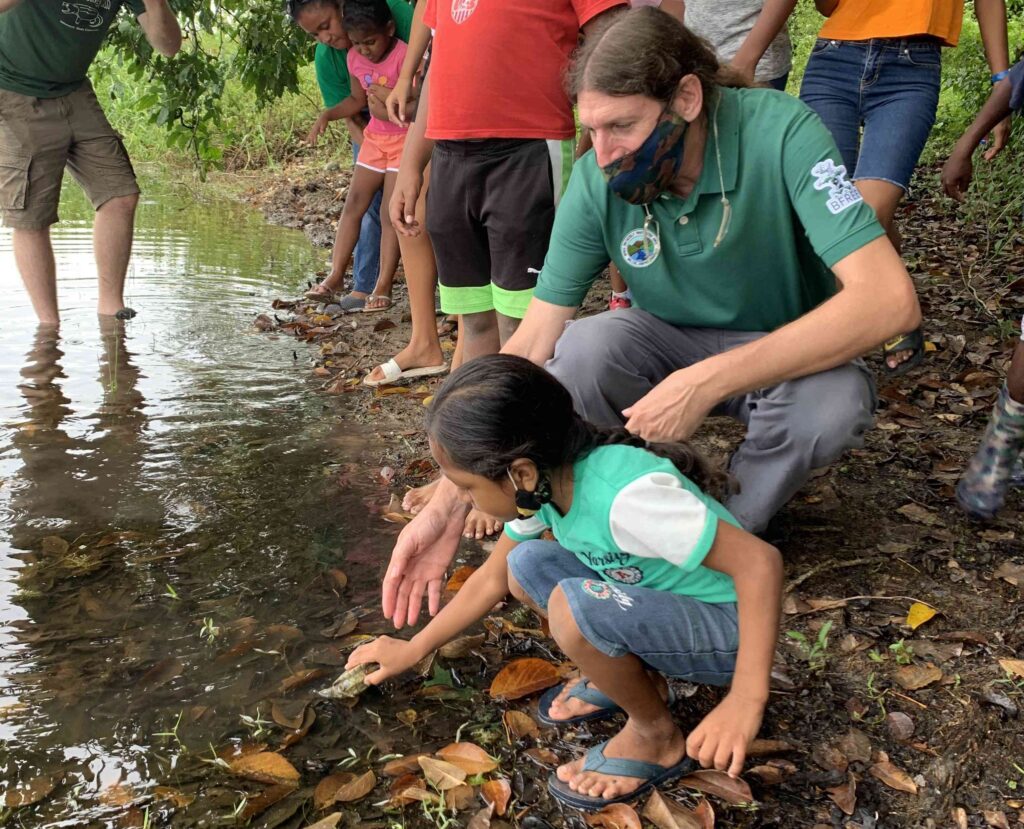Blog
Finding Hope Amidst the Loss
A memory that is deeply lodged inside my brain – me, at the age of ten, navigating a trail behind my house winding through the lush broadleaf forests to the purpose of my being, the Belize River. A river that is deep and wide, created by two rivers colliding into one another. My heart pounds…
Read MoreThe Importance of Involving Local Communities in Conservation
By Jaren Serano I vividly recall my first time on the Belize River, navigating a canoe while assisting in population surveys for a Hicatee assessment. Despite my Belizean upbringing, my familiarity was primarily inland, leaving the fishing communities’ way of life somewhat foreign to me. Engaging in river-based research marked my initial exposure to the…
Read MoreRocento Pau joins BFREE as Administrative Assistant
My Name is Rocento Pau. I was born and raised in Sunday Wood Village, which is in the southern district of Toledo. I am a Ketchi maya. I grew up working in the forest with my father for a living. I am a person who takes each opportunity as a learning experience. I love nature.…
Read MoreJaren Serano returns to BFREE as Dermatemys Program Coordinator
By Jaren Serano During my first stint at BFREE, I had the privilege of witnessing the positive impact that organizations like this have on land conservation, wildlife protection, and the conservation efforts among the local communities in Belize. When I joined as BFREE’s first Science and Education Fellow in 2017, I was immediately drawn to…
Read MoreThe Fascinating Characteristics of Sundew
By Mark Canti The astonishing characteristics of sundews are unbelievable to me. During two research trips with Dr. Rob Naczi of NY Botanical Garden, I learned a lot about plants, especially sedges. I was introduced to carnivorous plants and found them fascinating. I was shocked to learn that while walking around, we have been stepping…
Read MoreCollaborative Cacao Research Project
By Roxanna Chen BFREE in collaboration with the University of Tennessee, Knoxville (UTK) facilitated a cacao research project at the BFREE’s Field Station in May 2023. The primary objective of the collaboration was to co-design and enhance post-harvest practices and methods for Criollo Cacao which is intercropped and shade-grown in several experimental plots within the…
Read MoreCacao Fellow Assists in Country-wide Sedge Survey
by Mark Canti Last month, I participated in a research expedition to understand biogeography and documentation of sedges in Belize and to fill in gaps that previous botanists have left unexplored and unidentified. My role throughout this research was to help navigate, locate, and identify existing, new, or unusual sedges, but most importantly to learn…
Read MoreBFREE Welcomes Roxanna Chen as First Advanced Cacao Fellow
We are pleased to introduce BFREE’s newest staff member, Advanced Cacao Fellow, Roxanna Chen. Roxanna will spend the next year and a half investigating and determining best post-harvest processing of the criollo cacao at BFREE as well as characterizing the different varieties. She will also get training from experts and become BFREEs chocolate lab technician.…
Read MoreNaming Opportunity for a New Species of Beaksedge
By Dr. Robert Naczi and Heather Barrett Through his research to document the diversity and conservation status of Belizean sedges, Dr. Robert Naczi of New York Botanical Garden recently discovered a species of beaksedge previously unknown to science. In Belize, the Sedge Family (Cyperaceae) is one of the five largest (most species-rich) plant families. Beaksedges…
Read MoreIntroducing New Hospitality Staff at BFREE
Two new faces greet BFREE visitors in 2023. We are happy to introduce Pedro Witz, Office and Hospitality Coordinator, and Mario Teul, Tour Guide and Educator. (Header photo of Mario Teul with students from Kutztown University by Chris Habeck.) Pedro Witz Pedro Witz was born in Puerto Barrios Guatemala in 1987. Shortly after, his parents migrated…
Read More

